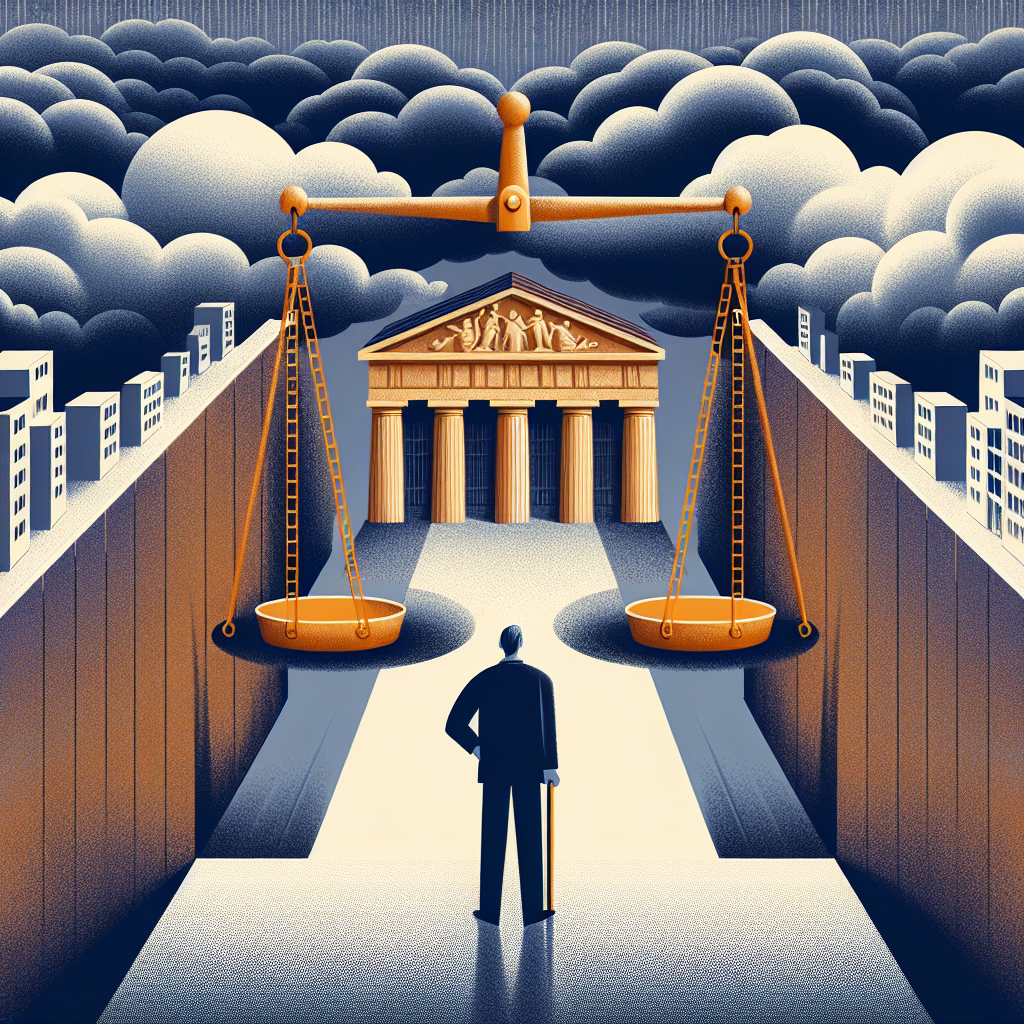-
Table of Contents
- The Fed’s Dilemma: Powell’s Response to Rising Rates and Economic Strain
- Understanding the Fed’s Role
- The Dual Mandate
- The Current Economic Landscape
- High Inflation Rates
- Supply Chain Disruptions
- Labor Market Imbalances
- Geopolitical Tensions
- Powell’s Strategic Responses
- Gradual Interest Rate Hikes
- Quantitative Tightening
- Forward Guidance
- Coordination with Fiscal Policy
- Case Studies: Historical Precedents
- The Volcker Era
- Post-2008 Financial Crisis
- Implications for the U.S. Economy
- Consumer Spending
- Business Investment
- Housing Market
- Financial Markets
- Global Considerations
- Emerging Markets
- Global Trade
- Conclusion
The Fed’s Dilemma: Powell’s Response to Rising Rates and Economic Strain

The Federal Reserve, under the leadership of Chairman Jerome Powell, faces a complex and multifaceted challenge: managing rising interest rates while mitigating economic strain. This balancing act is critical for maintaining economic stability and fostering growth. In this article, we will explore the intricacies of the Fed’s dilemma, Powell’s strategic responses, and the broader implications for the U.S. economy.
Understanding the Fed’s Role
The Federal Reserve, often referred to as “the Fed,” is the central bank of the United States. Its primary responsibilities include regulating the nation’s monetary policy, supervising and regulating banks, maintaining financial stability, and providing financial services. The Fed’s decisions on interest rates are particularly influential, as they affect borrowing costs, consumer spending, and overall economic activity.
The Dual Mandate
The Fed operates under a dual mandate from Congress:
- To promote maximum employment
- To ensure stable prices (control inflation)
Balancing these two objectives can be challenging, especially in times of economic uncertainty. Rising interest rates, for instance, can help control inflation but may also slow down economic growth and increase unemployment.
The Current Economic Landscape
As of 2023, the U.S. economy is grappling with several significant challenges:
- High inflation rates
- Supply chain disruptions
- Labor market imbalances
- Geopolitical tensions
These factors have created a complex environment for the Fed to navigate. Let’s delve deeper into each of these challenges.
High Inflation Rates
Inflation has surged to levels not seen in decades, driven by a combination of factors such as increased consumer demand, supply chain bottlenecks, and rising commodity prices. According to the Bureau of Labor Statistics, the Consumer Price Index (CPI) rose by 7.5% year-over-year in January 2023, the highest rate since 1982.
Supply Chain Disruptions
The COVID-19 pandemic has exposed vulnerabilities in global supply chains, leading to shortages of goods and materials. These disruptions have contributed to higher production costs and, consequently, higher prices for consumers.
Labor Market Imbalances
The labor market has experienced significant shifts, with a mismatch between the skills of available workers and the needs of employers. This has led to labor shortages in certain sectors and wage pressures, further fueling inflation.
Geopolitical Tensions
Geopolitical events, such as trade disputes and conflicts, can have far-reaching economic implications. For example, the ongoing trade tensions between the U.S. and China have affected global supply chains and contributed to economic uncertainty.
Powell’s Strategic Responses
In response to these challenges, Chairman Jerome Powell and the Federal Reserve have implemented several strategies to manage rising interest rates and economic strain. These strategies include:
- Gradual interest rate hikes
- Quantitative tightening
- Forward guidance
- Coordination with fiscal policy
Gradual Interest Rate Hikes
One of the primary tools at the Fed’s disposal is the federal funds rate, which influences short-term interest rates across the economy. To combat inflation, the Fed has embarked on a series of gradual interest rate hikes. By increasing borrowing costs, the Fed aims to cool down consumer spending and investment, thereby reducing inflationary pressures.
However, this approach is not without risks. Higher interest rates can slow economic growth and increase unemployment. Therefore, the Fed must carefully calibrate its rate hikes to avoid triggering a recession.
Quantitative Tightening
In addition to raising interest rates, the Fed has also employed quantitative tightening (QT) to reduce the size of its balance sheet. During the pandemic, the Fed engaged in large-scale asset purchases (quantitative easing) to support the economy. Now, by allowing these assets to mature without reinvesting the proceeds, the Fed aims to reduce liquidity in the financial system and curb inflation.
Forward Guidance
Communication is a crucial aspect of the Fed’s strategy. Through forward guidance, the Fed provides information about its future policy intentions to influence market expectations and behavior. By signaling its commitment to controlling inflation, the Fed can help anchor inflation expectations and reduce uncertainty.
Coordination with Fiscal Policy
Monetary policy alone cannot address all economic challenges. Coordination with fiscal policy is essential for a comprehensive response. The Fed has worked closely with the federal government to ensure that monetary and fiscal policies are aligned and mutually reinforcing.
Case Studies: Historical Precedents
To better understand the current situation, it is helpful to examine historical precedents where the Fed faced similar dilemmas. Two notable examples are the Volcker era of the early 1980s and the post-2008 financial crisis period.
The Volcker Era
In the late 1970s and early 1980s, the U.S. experienced high inflation, peaking at 14.8% in March 1980. To combat this, then-Fed Chairman Paul Volcker implemented aggressive interest rate hikes, pushing the federal funds rate to nearly 20% by 1981. While this successfully brought inflation under control, it also led to a severe recession and high unemployment.
The Volcker era demonstrates the trade-offs involved in using interest rate hikes to control inflation. It underscores the importance of balancing inflation control with economic growth and employment.
Post-2008 Financial Crisis
Following the 2008 financial crisis, the Fed, under Chairman Ben Bernanke, implemented unprecedented monetary easing measures, including near-zero interest rates and quantitative easing. These measures helped stabilize the financial system and support economic recovery. However, they also led to concerns about potential inflation and asset bubbles.
The post-2008 period highlights the challenges of managing economic recovery while preventing long-term imbalances. It also illustrates the importance of flexibility and adaptability in monetary policy.
Implications for the U.S. Economy
The Fed’s current strategies have significant implications for various aspects of the U.S. economy, including:
- Consumer spending
- Business investment
- Housing market
- Financial markets
Consumer Spending
Higher interest rates can lead to increased borrowing costs for consumers, affecting their ability to finance big-ticket purchases such as homes and cars. This can result in reduced consumer spending, which is a key driver of economic growth.
Business Investment
Businesses may also face higher borrowing costs, which can impact their investment decisions. Higher interest rates can lead to reduced capital expenditures, slowing down business expansion and innovation.
Housing Market
The housing market is particularly sensitive to interest rate changes. Higher mortgage rates can reduce housing affordability, leading to a slowdown in home sales and construction. This can have broader implications for the economy, given the housing market’s significant contribution to GDP.
Financial Markets
Financial markets are closely tied to interest rate expectations. Higher rates can lead to increased volatility and reduced valuations for stocks and bonds. Investors may also shift their portfolios towards safer assets, affecting market dynamics.
Global Considerations
The Fed’s actions have global ramifications, given the interconnectedness of the global economy. Higher U.S. interest rates can lead to capital outflows from emerging markets, putting pressure on their currencies and financial systems. Additionally, global trade and investment flows can be affected by changes in U.S. monetary policy.
Emerging Markets
Emerging markets often rely on foreign capital to finance their growth. Higher U.S. interest rates can lead to capital outflows, resulting in currency depreciation and increased borrowing costs for these economies. This can create financial instability and hinder economic development.
Global Trade
Changes in U.S. monetary policy can also impact global trade flows. Higher interest rates can strengthen the U.S. dollar, making U.S. exports more expensive and imports cheaper. This can affect trade balances and economic growth in other countries.
Conclusion
The Federal Reserve, under Chairman Jerome Powell, faces a delicate balancing act in managing rising interest rates and economic strain. The Fed’s strategies, including gradual interest rate hikes, quantitative tightening, forward guidance, and coordination with fiscal policy, aim to control inflation while supporting economic growth. Historical precedents, such as the Volcker era and the post-2008 financial crisis period, provide valuable lessons for navigating this complex landscape.
The implications of the Fed’s actions are far-reaching, affecting consumer spending, business investment, the housing market, financial markets, and the global economy. As the Fed continues to respond to evolving economic conditions, its decisions will play a crucial role in shaping the future trajectory of the U.S. economy.
In summary, the Fed’s dilemma underscores the importance of a balanced and flexible approach to monetary policy. By carefully calibrating its actions and maintaining clear communication, the Fed can navigate the challenges ahead and foster a stable and prosperous economic environment.








